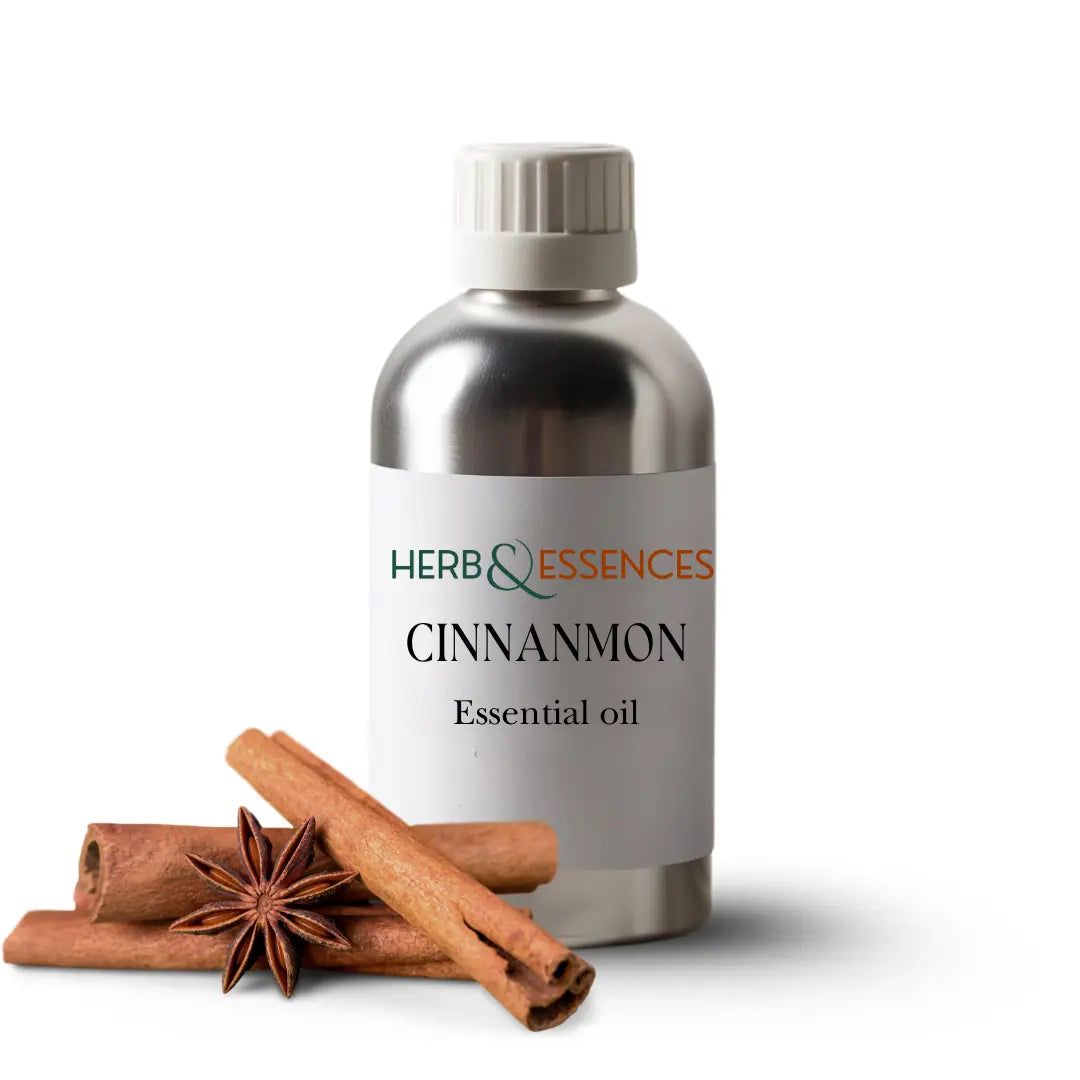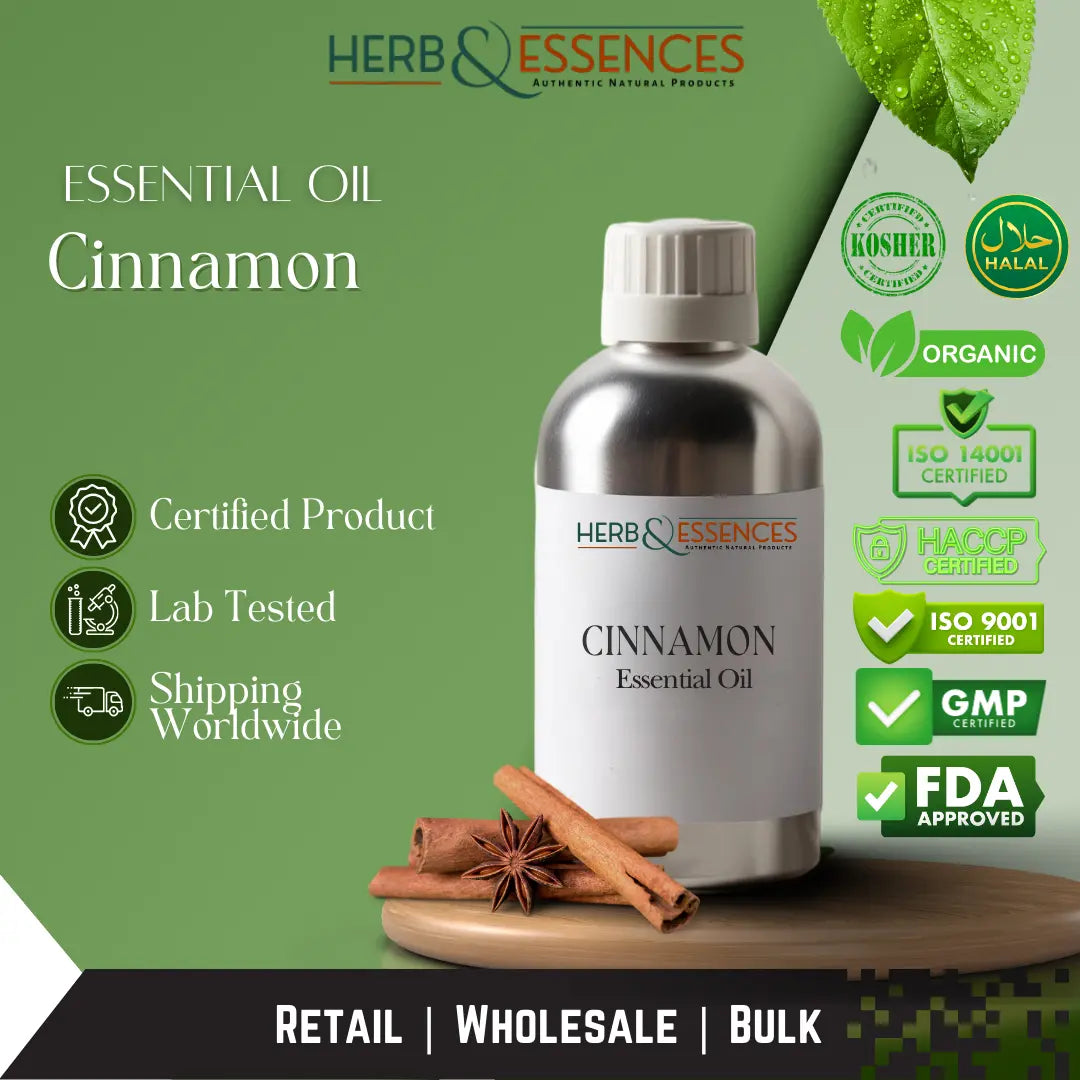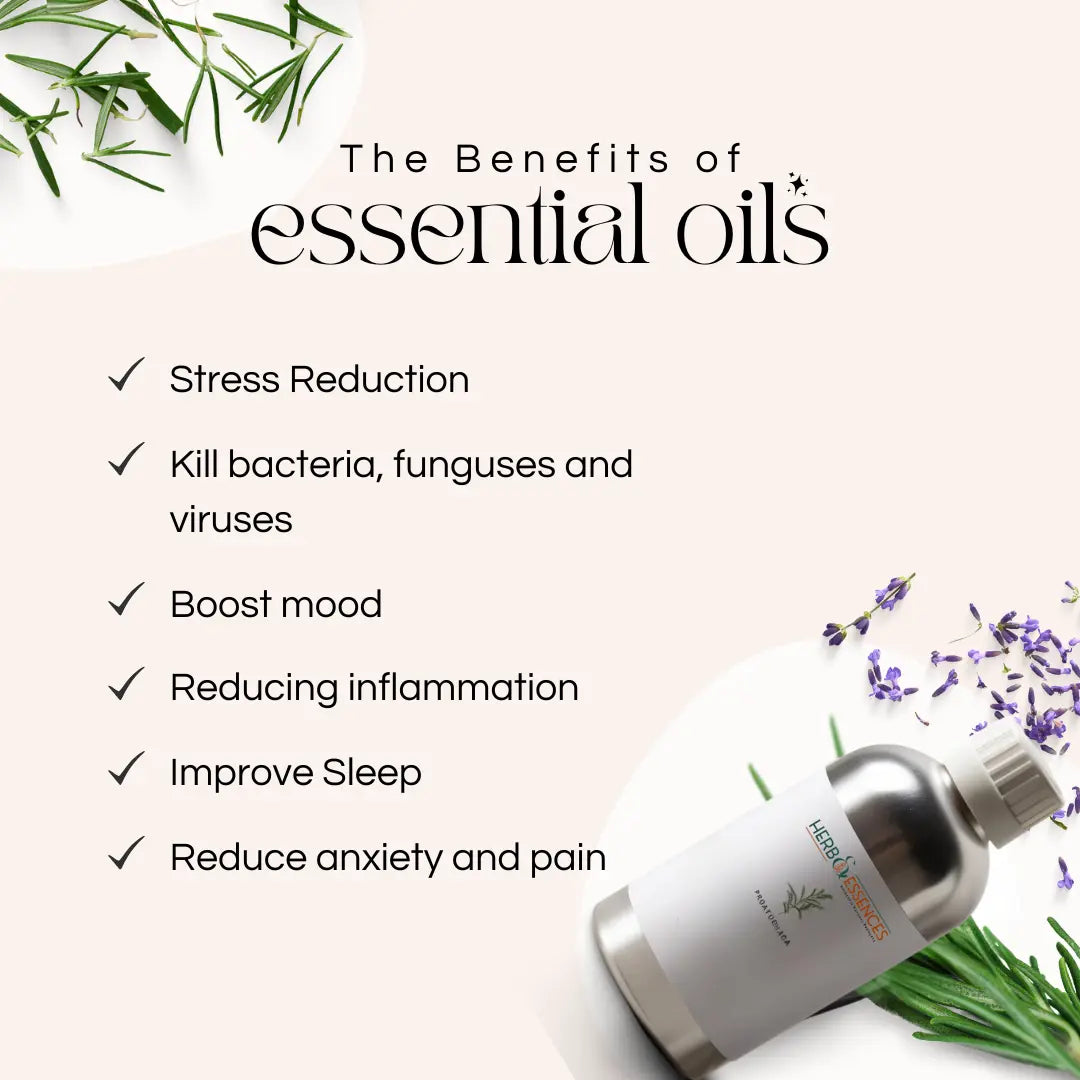Cinnamon Essential Oil
Cinnamon Essential Oil
Couldn't load pickup availability
Share
Cinnamon Essential Oil
Botanical Information
Cinnamon essential oil is derived from the bark or leaves of Cinnamomum zeylanicum (commonly known as Ceylon Cinnamon) or Cinnamomum cassia (Cassia Cinnamon), which belong to the Lauraceae family. Known for its warm, spicy, and sweet aroma, Cinnamon has been prized in traditional medicine, culinary traditions, and aromatherapy for its stimulating and invigorating properties.
Origin and Source
Cinnamon trees are native to Sri Lanka, southern India, and Southeast Asia. Ceylon Cinnamon, often referred to as "true cinnamon," is predominantly sourced from Sri Lanka, while Cassia Cinnamon is widely cultivated in China, Indonesia, and Vietnam. Sustainable practices are implemented during cultivation and harvesting to ensure quality while protecting natural resources.
Extraction Method
Cinnamon essential oil is produced using steam distillation:
· Bark Oil: Extracted from the inner bark of cinnamon trees for a more robust and intense aroma.
· Leaf Oil: Distilled from the leaves for a lighter and slightly milder scent with similar therapeutic benefits.
Physical Properties
· Appearance:
o Bark oil: Reddish-brown liquid.
o Leaf oil: Pale yellow to light brown liquid.
· Aroma: Warm, spicy, sweet, and woody with slight earthy undertones.
· Viscosity: Medium, blending easily with carrier oils and other essential oils.
· Solubility: Insoluble in water; soluble in carrier oils and alcohol.
Technical Specification
· Specific Gravity:
o Bark oil: 1.000–1.030.
o Leaf oil: 0.960–0.990.
· Refractive Index: 1.500–1.520.
· Flashpoint: Approximately 65–85°C, depending on the type of oil.
Uses and Applications
· Aromatherapy: Energizes and uplifts mood, helps reduce fatigue, and enhances focus.
· Skincare: Used in diluted formulations for its purifying and antimicrobial properties.
· Hair Care: Incorporated in scalp treatments to promote circulation and stimulate hair growth.
· Massage Therapy: Blended with carrier oils for warming massages to ease muscle tension.
· Natural Remedies: Added to formulations for immune support and to relieve respiratory discomfort.
· Perfumery: Acts as a base or middle note in spicy and oriental fragrance compositions.
· Culinary Uses: Used sparingly as a flavoring agent in food and beverages (food-grade oil only).
· Home Care: Added to cleaning products for its antibacterial properties and warm fragrance.
Benefits and Properties
· Stimulating and Invigorating: Enhances focus, energy levels, and emotional well-being.
· Antimicrobial: Provides cleansing properties, ideal for skin and home care applications.
· Warming Effect: Promotes circulation, easing muscle and joint discomfort.
· Immune Support: Known for its traditional use in wellness remedies to boost the immune system.
· Aromatic Depth: Adds richness and warmth to blends and fragrances.
Safety Information
· Dilution: Always dilute Cinnamon essential oil with a carrier oil before applying directly to the skin, as it is highly potent and may cause irritation.
· Patch Test: Test a small area of skin to ensure no allergic reactions or sensitivities.
· Avoid Contact: Do not apply near sensitive areas such as the eyes, nose, or open wounds.
· Medical Precautions: Consult a healthcare professional if pregnant, breastfeeding, or undergoing medical treatment. Avoid use on hypersensitive or damaged skin.
· Keep Away: Store safely out of reach of children and pets.
Storage and Shelf Life
· Storage: Store in a cool, dry place away from sunlight, heat, and moisture. Amber or cobalt blue glass bottles are ideal for preserving aromatic integrity.
· Shelf Life: Typically lasts 2–3 years when stored under optimal conditions.
Packaging and Handling
· Packaging: Glass bottles are preferred for retail quantities, while HDPE containers are suitable for bulk storage.
· Sealing: Ensure containers are tightly sealed to prevent evaporation and contamination.
· Handling: Use sterilized tools during transfer or application to maintain purity.
Sustainability and Ethics
· Eco-conscious Practices: Produced using sustainable harvesting techniques to protect cinnamon trees and their ecosystems.
· Cruelty-free: Not tested on animals, adhering to ethical production standards.
· Vegan-friendly: Contains no animal-derived components, making it suitable for environmentally conscious consumers.
· Fair Trade: Often sourced through initiatives that support local farmers and promote sustainable livelihoods.








